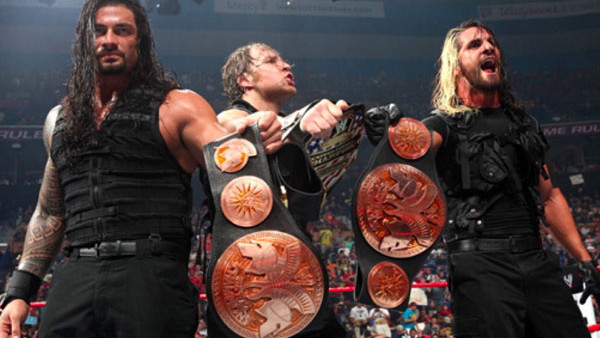10 Creative Triumphs Of WWE’s PG Era
Believe in the power of a broken clock.

Since 2008, the year in which WWE went PG, the company has suffered from a numbing creative malaise.
The lack of mainstream competition has enabled a lazy adherence to formula. Televised main events are determined in the opening segment. This serendipity has been the strategy for aeons. Major feuds rumble on for three consecutive pay-per-views, elongated through outdated heel chicanery. These shortcuts, still in vogue, were compounded by the smash success of John Cena's family-friendly babyface act. It represented a risk-free formula with which to appease sponsors. There was no reason to break the formula, and Cena himself proved unbreakable, recovering from injuries with supernatural acceleration and thus exacerbating his sweeping presence on television.
The Super Cena Era was sufficient for sponsors, but not the fandom, who in parallel with it voiced their dissent over Cena and the product itself. Their influence over the product grew to such an extent that, eventually, they gained the power to change it. WrestleMania XXX was as much a victory for democracy as it was for the anointed Daniel Bryan.
He got over by accident more so than design. His celebrations illuminated the unenviable fact that WWE's vision of wrestling was at odds with what its audience wanted - but Edge's crusade against stupidity in 2010 wasn't entirely warranted...
10. The Night Mayor Of Suplex City

Even Brock Lesnar was not immune to the myopic and misguided whims of creative upon his WWE return in 2012.
He senselessly lost to John Cena at Extreme Rules - when Cena was meant to be in the midst of a confidence crisis in storylines. In reality, Cena was still the company's overarching focal point. Everything, the Beast included, was surplus to him. Brock's tedious Triple H trilogy almost doused his heat altogether - but a cracking match with CM Punk at SummerSlam 2013 proved that the mega investment was worth it.
He was reborn as the Night Mayor of Suplex City in 2014; after shockingly ending the Undertaker's Streak at WrestleMania XXX, he killed John Cena with 16 German suplexes at SummerSlam in an equally shocking match layout. Lesnar threw Cena around the ring like he was nothing. It was inconceivable bravery from a regime defined by hesitation and safety. Lesnar was reborn as the strongest kayfabe threat in company history, after which he embarked on the most entertaining run of his pro wrestling career. The act was almost too good, too logical, in that it homogenised his tactics (why would he deviate from them?) and allowed him, known mercenary, to phone it in. Still, at his height, there is nobody in wrestling - not even the stupidly good NJPW - as spectacular as Lesnar.
The masterful way with which he has been booked has as much to do with that as he and Paul Heyman do.